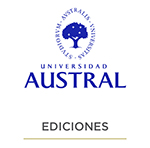The value of the Interamerican Court of Human Right’s advisory opinions in the light of OCs 21/14 AND 23/17
The “singing of the tero” or “Another brick in the wall of the 'conventionality control' doctrine"
Abstract
The paper addresses the unconventionality developments of the Interamerican Court of Human Rights expressed in Advisory Opinions 21/14 and 23/17 regarding the extension of the conventionality control doctrine to the contents of advisory opinions using legitimate questions on substantive matters presented by several States. The author holds that these developments not only are ultra vires, but also have no legal basis and are only the result of the Court’s wishful thinking.
Downloads
References
Buergenthal, T. (1985). The advisory practice of the Inter-American Human Rights Court. American Journal of International Law, 79(1), 1-27.
Corte Interamericana de Derechos Humanos. (2020). Informe Anual 2019. http://www.oas.org/es/cidh/docs/anual/2019/indice.asp
Del Toro Huerta, M. I. (2006). El fenómeno del soft law y las nuevas perspectivas del derecho internacional. Anuario Mexicano de Derecho Internacional, VI. https://revistas.juridicas.unam.mx/index.php/derecho-internacional/article/view/160.
Faúndez Ledesma, H. (2004). El sistema interamericano de protección de los derechos humanos: aspectos institucionales y procesales (3a ed.). San José: Instituto Interamericano de Derechos Humanos.
Ferrer Mac-Gregor, E. (2017). What do we mean when we talk about judicial dialogue?: Reflections of a judge of the Inter-American Court of Human Rights. Harvard Human Rights Journal, 30, 89-127.
García Ramírez, S. (2005). La jurisprudencia de la Corte Interamericana de Derechos Humanos en materia de reparaciones. En La Corte Interamericana de Derechos Humanos: Un Cuarto de Siglo: 1979-2004. San José: Corte Interamericana de Derechos Humanos.
Hamilton, A. (1788). The Judiciary Department. El Federalista, (78). https://guides.loc.gov/federalist-papers/full-text
Hamilton, A. o Madison, J. (1788). The Structure of the Government Must Furnish the Proper Checks and Balances Between the Different Departments. El Federalista, (51). https://guides.loc.gov/federalist-papers/full-text
Komárek, J. (2012). Playing with Matches: the Czech Constitutional Court Declares a Judgment of the Court of Justice of the EU Ultra Vires. European Constitutional Law Review, 8(2), p. 323-337.
Lauterpacht, H. (1982). The development of International Law by the International Court. Cambridge: Grotius Publications Limited.
Malarino, E. (2010). Activismo judicial, punitivización y nacionalización. Tendencias antidemocráticas y antiliberales de la Corte Interamericana de Derechos Humanos. En Elsner, G., Ambos, K. y Malarino, E. (Coords.), Sistema interamericano de protección de los derechos humanos y derecho penal internacional (Vol. 1) (pp. 25-62). Montevideo: Konrad Adenauer Stiftung.
Mayr, T. F., Mayr-Singer, J. (2016). Keep the Wheels Spinning: The Contributions of Advisory Opinions of the International Court of Justice to the Development of International Law. Heildelberg Journal of International Law, ZaöRV, 76(2), 425-449.
Medina Quiroga, C. (2005). Las Obligaciones de los Estados bajo la Convención Americana sobre Derechos Humanos. En La Corte Interamericana de Derechos Humanos: Un Cuarto de Siglo: 1979-2004. San José: Corte Interamericana de Derechos Humanos.
Nikken, P. (1999). La Función Consultiva de la Corte Interamericana de Derechos Humanos. En Memoria del seminario: El Sistema Interamericano de Protección de los Derechos Humanos en el Umbral del siglo XXI (Tomo I, 2a ed.). San José: Corte Interamericana de Derechos Humanos.
Osieke, E. (1982). The legal validity of ultra vires decisions of international organizations. American Journal of International Law, 77(2), 239-256.
Real Academia Española. (s.f.). Diccionario de la lengua española. https://dle.rae.es/cultura?m=form
Real Academia Española. (s.f.). Diccionario del español jurídico. https://dej.rae.es/
Vítolo, A. M. (2013). Una novedosa categoría jurídica: el “querer ser” – Acerca del pretendido carácter normativo erga omnes de la jurisprudencia de la Corte Interamericana de Derechos humanos. Las dos caras del “control de convencionalidad”. Ponencia presentada en el XI Congreso Iberoamericano de Derecho Constitucional “Jorge Carpizo”. Tucumán, Argentina, septiembre de 2013.
Copyright (c) 2020 Revista Jurídica Austral

This work is licensed under a Creative Commons Attribution-NonCommercial-NoDerivatives 4.0 International License.
This license allows the copy, distribution, exhibition and representation of the work provided authorship is acknowledged and the work is properly quoted. Commercial use of the original work or the generation of derived works are not allowed.
The authors hereby guarantee the right to the first publication of the work to the Revista Jurídica Austral.
















































